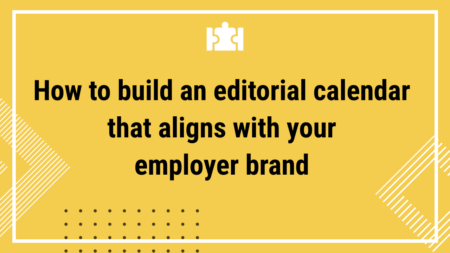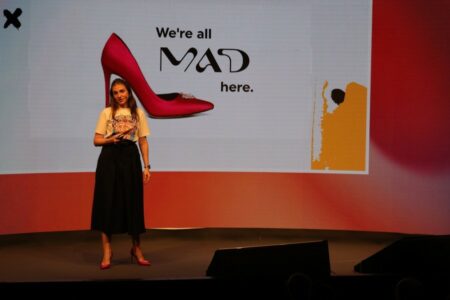EB: Do you still remember when you first realized there was something about to change?
Maria: On February 28th, at precisely 7:56 am, with a slightly worrying “WhatsApp voice,” I asked a group of friends living in Berlin about the atmosphere in their offices around Covid-19. I had just finished reading a newsletter from NOBL “strongly advising” their readers to examine work policies and systems. The article’s tone of voice was pretty concerning, especially the part around future visioning and scenario planning starting from the question: “If the worst predictions come true, in six months, what might businesses look like?” On March 13th, I had already dropped any traveling and birthday plans, choosing to stay in, still receiving a friend’s visit, and awkwardly reassuring each other that both of us were fine. He had just been announced by his company that everyone would work from home starting with the following week.
Those six months have already passed. How are things looking today? Not exactly great. Are there any conclusions? Plenty. Do we know what’s coming next? Yes and no. Mountains of content around Covid-19 and its impact on work have already welled up the Internet. It’s almost impossible to grapple with one’s FOMO lurking in the corners of our minds each time new statistics, new concepts, latest webinars, new anything pops out in our inboxes and on social media. On top of it, the stakes feel pretty high for all of us, considering the top headlines these days, “reimagine the new world in the COVID era,” “rebuild the new normal,” “reshape the future of work.”
EB: We now have the unexpected opportunity to revamp our organizations’ internal practices and ways of working principles. Do you have any suggestions in terms of steps to be taken shortly?
Maria: Whoever you may be, at whatever stage of your personal and professional life this pandemic has caught you, and regardless of your position and social status, let’s do that reimagining, reshaping, and rebuilding. You don’t necessarily have to aim for the world and global impact, but for the more localized effect. But, whatever path you may choose in doing so, I strongly advise you to do it with deliberate human decency. My saying this doesn’t cancel all those strategic and functional actions that still need to be taken against business objectives and challenges, rethinking organizational structures for better productivity, polishing the existing performance management approaches, and everything else across the employee journey stages. It just reinforces the somewhat forgotten common sense that employees are humans first and employees second and that human decency is one powerful strength, and not a vulnerability, for both individuals and organizations.
Most companies did an excellent job of adapting and answering immediate issues while keeping an eye on employee well-being and supporting unforeseen employee needs. I have a feeling that many preexisting broken employee experience touchpoints that had been lingering around for ages have now been solved with some quick tweaks. But the time for quick tweaks and unfounded assumptions has ended. We should now be getting ready not for “the new normal,” but for whatever feels right and makes complete sense for each organization. Still, if there’s something that this “new normal” should encompass, is that sense of camaraderie or togetherness that emerged from this global crisis. And this is just one of the assets we’ve gained out of these troubling months.
On this note, aside from the more apparent gains and unfortunate losses, what else have companies gained or lost worth introducing in their next reflection, planning, and deploying actions? This is not the primary question to be asked right now, but I see it as one of the leading inquiries. For everything that should happen next, I have a few simple suggestions before deep diving into bringing new rounds of changes across any organization.
- It may be worth their while to go back the memory lane of the last six months and resurface those critical decisions and the outcomes they triggered for everything that has changed across the employee experience;
- From the younger start-up to the big corporate, not having access to relevant people data is no longer an issue; it’s just a matter of identifying and understanding what those chunks of information are whispering and correctly translating it into actionable insights;
- Let’s not forget there was a reality before COVID-19 hit hard on the world. What’s left unsolved from that era? What were companies about to launch back then and had to be put on hold? What were team members talking about? There’s a chance those things will resurface in the most unpredictable moment;
- I know everyone’s itching to peek at what’s being told outside the company’s realm. Check those statistics, read what industry and field gurus have been preaching lately, fathom the main directions in terms of core themes of interest. But choose only what makes sense and feels right for each organization;
- Finally, when tackling all the information above, I’d take a step back and check one of the most basic things out there, insidiously sneaking into how people work and how projects are handled. No matter how superfluous, self-explanatory, and silly it may sound, here’s a question for all organizations: are you sure your teams are defining what needs to be done and by whom in the same way?
Use everything you’ve got to create sensemaking and consistently glue back all of your ecosystem’s fragmented pieces. Be deliberate. Have human decency.
EB: What would be the most noticeable changes that occurred across key employee experience stages and moments?
Maria: To answer this question and some other specific questions you can find below, I took the “memory lane exercise” to the same WhatsApp group of friends in Berlin working for well-established workplaces. I invited them to reflect on these particular changes and their impact on them and their colleagues. Then, I curiously dissected their responses, trying to put together change patterns and effects. You won’t find any conclusions or proposed solutions, but you will surely bump into some red flags and surprising outcomes that should be part of each organization’s talking points agenda.
EB: Onboarding: How has working from home impacted the onboarding process?
Maria: New information flow and logistical implications
The show-and-tell type of information exchange mixed with being in “the middle of the action” and picking up information on the go had to be adapted to an online version. As a result:
- Information moved to emails, video calls, and on knowledge and intranet platforms more than before. New joiners now get more sterile and fragmented information, without the implicit “face-to-face human translation” that can be both beneficial and misleading;
- The relatively natural flow of information transformed into a disjointed flow, shredding information into smaller pieces, and accidentally leaving behind even basic details (e.g., how and who to reach out for a particular reason);
- On top of these, not being able to associate a face with all those names pouring in one’s email and on internal platforms has turned into an unnecessary “headache” for new team members;
Do you remember those social media instances with carefully staged desks welcoming a new joiner?
- For the new team member, those transformed into posts expressing their sheer surprise to have found understanding and care from their new teams and an onboarding process working relatively smoothly;
- For the teams in charge with onboarding other people, this change brought along some logistical add-ons in terms of booking delivery services to ship equipment before the actual first date and assess each individual’s personal needs;
EB: Crisis Employee Engagement: Can you think of something that companies have done during this time to maintain the glue that keeps the company united?
Maria: Day in, day out Check-Ins and Get-together(s)
Companies coped with the crisis’s impact in the best way possible, swiftly building short-term engagement tweaks meant to increase morale, relax the general atmosphere, and make people feel more united. From cringe to heartwarming and fun, we’ve seen or been part of a screenshot or Zoom party joined by at least one pet, dressed up, making a mess out of our kitchens, and sharing a glass of water, of course.
But, have you ever thought that too much care would feel overwhelming and counterproductive, especially in an organizational context and during a crisis? Of course, fear and lack of trust are as significant drivers, “justifying” all those Morning Check-Ins, Team Lunches, and Evening Check-Outs suffocating people’s calendars. As a result:
- The early stages of working from home caught teams starting and closing the day together in short sessions to check on each other and vent about the day;
- Although most of these meetings no longer exist, at least not with the same intensity, they proved to be useful for the strangeness of the first weeks and good practice for the type of distributed work that’s starting to crop up in several organizations;
- Those meetings were also a good opportunity to tap into an aligned and shared collective uncertainty, allowing people to be more vulnerable than usual and nudging them to discover each other from a different perspective;
EB: Learning & Development: How has learning and development contributed to keeping the spirits up? Is learning an integral part of onboarding or not?
Maria: From stillness to facing the same struggles
- As a general evolution, L&D saw itself freezing training/course budgets, followed by building or facilitating tools for mental health and WFH, redirecting people to online courses and increasing online content consumption, and having a come-back to launching traditional programs like talent management or leadership development, all in an adapted form to support online delivery;
- While a strategical asset for any company, L&D has always faced an extensive array of challenges (detailed here). These months haven’t brought any changes. L&D teams still have to deal with the sometimes over the top and unjustified expectations of stakeholders and end-users (perfectly adapting content to business needs, constantly integrating feedback on content, being more proactive, etc.);
EB: Work-life balance: How about work-life balance? It looks like, in the absence of clear 9-5 working schedules, some people are working about 30% more than before. How can companies prevent burnouts under these (new) circumstances?
Maria: The road to mental safety
It’s interesting how we still need to have a concept that defines the common sense behind going to work (or logging in) and leaving work (or logging out), repeating this five times a week, and still functioning as a decent human being. Clearly, the most frightening reason for promoting such a concept is the cruel existence of intentionally careless workplaces about their employees’ mental health.
- As long as companies have a psychologically-safe work environment that looks at its employees as humans first and employees second, actively listens to them, and acts according to those voiced out needs, we should all be able to spend our time and energy more productively and gain more joy for both our personal and professional lives. I’d like to call this a human decency standard. 🙂
- Moreover, let’s finally acknowledge that having one week a year dedicated to mental health awareness is not enough. These past six months have only exacerbated the already existing and unaddressed mental health issues concerning workplaces. On top of that, MH is such a broad topic, just by mentioning it one time a year won’t even start to address the real issues.
- I personally encourage companies to embed mental health care into their organizational bone structure, to invest in educating people managers, so they know better how to support their team members and themselves, to invest in the real deal, authorized psychological expertise and not just copy-paste “10 best practices” to be shared in a deck presentation;
- I can guarantee that by doing this, companies will contribute to building a better world and a healthier global workforce. And what a powerful communication platform this could be for any employer branding strategy (more on how to build your employer brand here);
EB: Alignment: Team and company alignment, under these new, different work conditions. How do executives, team leaders and employees stay united from afar?
Maria: Communication as a thought process
The new WFH environment allowed many subtle positive changes working together towards more transparency, more alignment, and a more solid foundation for trust:
- Even if many of the March-May initiatives fell under “over-communicating” and “unnecessary,” they forced leadership/management teams to really ponder on things and be more empathetic towards their teams. All of this as a global demonstration that communication is a thought process, not something that sounds nice or looks pretty;
- Creating this habitual communication environment not only pushed leaders to take a stand regularly but also employees to voice out their worries and ask for their needs to be met. One relevant example here comes from the workforce that still had to go to work while other colleagues were being shielded by their homes. They finally asked for their risk to be rewarded and aligned to other Berlin companies practices;
- No longer being constrained by physical space capacity combined with the pressure of making sure alignment doesn’t get lost enabled people to have access to meetings and updates sessions they couldn’t reach before. This helped lessen the information translation that comes along with each person’s understanding of things and to weaken the links of the formerly known “the corridors of informal company news broadcasting.”
EB: Digital Transformation: What’s your take on digital transformation? Are we closer to real adoption now that Covid-19 has sort of forced us all to make Zoom and other digital channels part of the company culture?
“Who led the digital transformation of your company?”
Maria: “A) CEO; B) CTO; C) COVID-19” would be the options listed in one of the most shared COVID-19-related memes. In reality:
- Following the DT definition, the general feeling is that companies have become more digitized, but not entirely. For some companies, this wave of change came as a shock, digital technology and processes not being part of their way of working. For some other companies, this was just a matter of dusting off in-place systems and processes available as a potential option for remote work but not a default requirement;
- If you search for DT articles from before the COVID-19 era, you’ll bump into some carefully designed steps for deploying real DT. The step about creating consensus and collective mindset was forcefully left out amidst a global crisis. But that shouldn’t be the case anymore. Balancing business priorities with employees’ needs should lead the next decision in choosing what digital tools to use, how to use them, and from where to use them;
EB: Remote work: Seeing that so many companies have implemented working from home as a means of keeping the organization alive, do you think this will determine a massive shift in how companies perceive work? Are we maybe learning to look at “remote work” differently?
Maria: “The one size fits all” finally doesn’t fit
One year ago, I was debating with a former colleague what would have taken for the company we were working for to accept working remotely more than “I have to wait for the plumber so I’ll work from home today.” None of us was creative enough to think about a global crisis.
One year later, the “3-2” or “2-3” (work from home days versus work from the office days) has already infiltrated within several companies. That means that the gate towards distributed work has been opened. Not that it didn’t exist before, but it couldn’t be touched that easily due to the monolith of resistance blocking the access to it.
With big tech players announcing their employees will be working from home until summer 2021 and tons of contradictory statistics and discussion threads splitting the world into two sides – pro-WFH or against WFH, the most effective approach for companies is to start listening to their employees and roll-up their sleeves to create customized WFH approaches.
As for my friends and their colleagues, opinions are divided, as seen below, another proof that “The one size fits all” approach no longer… fits the future of work.
- “Personally, I agree to go back to the office for two or three days a week and keep this balance because it helps me connect a lot easier with the people I work with, and I feel that we empower each other a lot more, and we cannot do this from our own living room that easily.”
- “Lots of people feel the need to come to the office, and they ask for that because they need to take part in the social process of work.”
- “We asked teams to decide on what would be the best way of working for them (as if COVID-19 hadn’t happened); I’d say that more than 50% decided that the WFH environment is better”.
Why does this article/interview jump from “deliberate human decency” to outlining the things that have changed across the social reality of our organizational lives? Why are so many articles stressing about what organizations should focus on now? It’s simple. We live in an organizational world. From the education we get and the food we eat to the work we do ourselves and the country rules we follow, everything is a manifestation of a stream of organizational structures that assure the functioning of our society.
We are part of these structures and we have the power to restore their balance again and again until this crisis will have passed. We just need to access the right resources, understand them, and “build back better” with deliberate human decency.
Here are a few resources to check out in the following weeks:
- Three timeless books (Change Management and the Human Factor, Radical Candor: Be a Kick-Ass Boss Without Losing Your Humanity, An Everyone Culture: Becoming a Deliberately Developmental Organization) that can calmly explain what you’ve been going through in terms of changes, support your guidance and feedback struggles, and steer your focus to building organizational cultures where everyone could “use errors and vulnerabilities as prime opportunities for personal and company growth.”
- McKinsey and NOBL for the spot-on insights and pivotal actions addressing next steps towards building back better to emerge stronger;
- Organizational Analysis course by Stanford for the conceptual tools and frameworks it offers to better understand organizations;
- MyHRfuture for the very pragmatic and efficient courses that facilitate understanding on key areas concerning people performance, wellbeing, and experience;
* Featured Image by Kelly Sikkema on Unsplash

Maria is Organization & Culture Consultant | Employer Branding Strategist | Internal Communications Expert, currently residing in Berlin.






